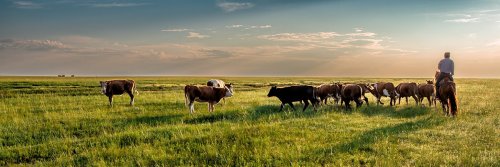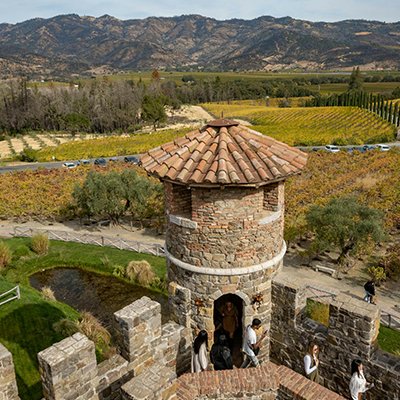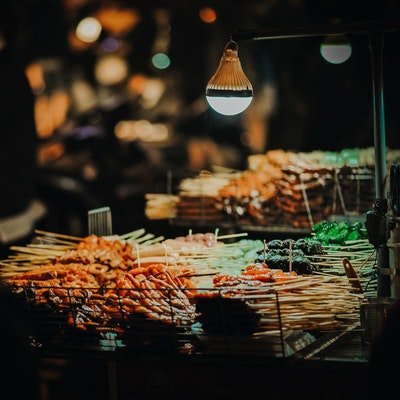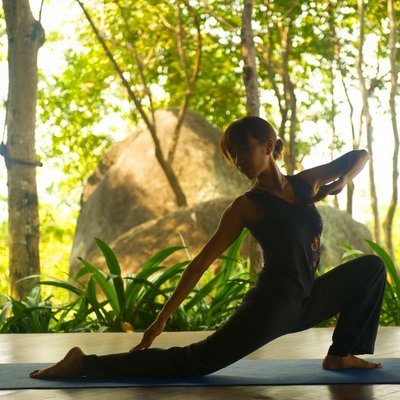Your head is spinning from the moment you put your foot on the ground of Mongolia, nicknamed 'County of Blue Sky' or 'Land of the Eternal Blue Sky,' as it has 250 sunny days annually. But your stomach is flip-flopping at the thought of tucking into food that’s so foreign in a very meaty way. No matter your reason for going to Mongolia—riding horses across vast open steppes, star gazing into a night sky with no loom of city lights, sleeping in a ger, or hanging out with local eagle hunters—you will have to eat.
Greeted with a traditional ‘sutei tsai' (salty milk tea) is not everyone's idea of English Breakfast brewed in a pot and drunk out of a fine china teacup with a pinky in the air. Being an honored guest has its drawbacks, as the dish of your dreams may be anything but 'gedes dotor’ (animal intestines). Or, when complaining about food poisoning or a hangover from drinking too much ‘nermel’ (home-made vodka) with a definite kick, you are given a bowl of ‘bantan' (meat porridge) to soak up the alcohol from the night before. Mongolian food is a culture shock to many.
Mongolian food can be challenging for a tourist, unlike any other country's cuisine. But it’s worth having, even if it's just for the bragging rights of what ended up in your mouth. Over the centuries, the food has been shaped by the majority of Mongolia's population living in barren geographic locations, the climate, and the nomadic lifestyle. You may chuckle at the thought that Mongolian meat has its own delightful designation as 'the five snouts'—yaks, camels, goats, horses, and sheep. The fat from these animals is crucial in the Mongolian diet to endure the harsh and relentless winters.
The food history of Mongolia was born out of necessity—in ancient years the nomads only had their livestock to rely on for food. This influenced a diet heavily centered around meat and animals that could produce milk (for butter, cheese, and yogurt), plus other basic needs such as wool for clothing and animal dung for fuel for their fires. Gathering was another food source to supplement their diets—roots, mushrooms, berries, grains, wild vegetables, and tubers. Some dishes have added noodles, rice and pasta. Milk tea is a main beverage, as is wild fruit juice and home-made alcoholic drinks.

The different regions of Mongolia have their own individual food traits. The vast steppes are awash in dairy products like salty milk tea and 'aaruul’ dried curd. Further north in the Khuvsgul region, where the ground is smothered in beautiful lakes and verdant forests, nature heavily features in their food. The iconic dish of 'Buuz' is made from meat and wild herbs gathered in the woods. In the arid Gobi Desert, produce preservation is the main priority here—meat is air-dried 'Borts.' In the Altai Mountains in the west, boiled meat covers noodles, and sausage is made from smoked or dried horse meat, influences picked up from its neighbor, Kazakhstan.
Traditional dishes are simple affairs but with unique flavors to tantalize jaded taste buds:
Boodog
Predominantly goat or marmot (a large ground squirrel) is barbequed by slipping blazing red hot stones inside the carcass after the meat has been separated from the skin. Apparently, if you rub the stones over your hands, once removed from the carcass, it's good skin therapy for dry skin, a relief for tiredness, and will improve blood circulation. This dish is a therapeutic crowd pleaser commonly found outdoors on the Mongolian steppes and dished up on special occasions when there is a horde of hungry mouths.

Khorkhog
Another example of Mongolia's barbecuing, but with a difference. This method is like using a pressure cooker—alternative layers of meat and hot stones, sometimes enhanced with potatoes in the layers, are put in a container with a heavy lid. The pot is placed on a fire for a couple of hours, ensuring the meat is cooked and tender. Another specialty for the outdoor masses.
Khuushuur
A dumpling-like dish associated with Russian cuisine, Khuushuur is a hot meat pocket of mouth-watering goodness, like a meat pie! Mutton, camel, or whatever meat and onions are squished into dough pouches and then fried. Khuushuur can be found in the countryside and cities. This mouthful of yumminess also comes in a vegetarian or Mongolian cheese option.
Buuz Dumplings
It only takes two bites to devour one of these dumplings! They can be found throughout Mongolia, with slight regional differences in the stuffing mixture. Typically, a dumpling is filled with minced mutton, seasonal herbs, onion, and garlic, then steamed. There are plenty of variations to sample throughout Mongolia. Buuz dumplings are a staple food for national holidays when families get busy making hundreds to feed their families and guests.
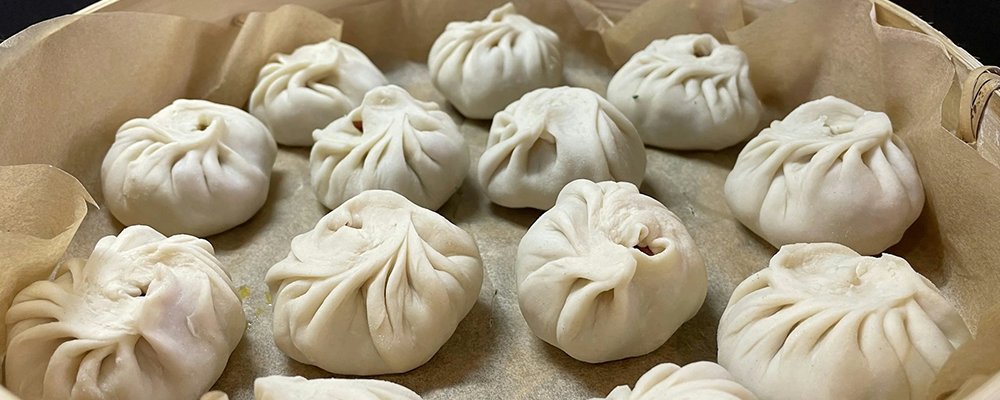
Aaruul
A dried curd made from goat, cow, yak, or sheep's milk. This milk is flavored with herbs for a savory taste, or fruit and sugar for a sweet touch. Aaruul has a bit of a sour note whether it's served soft, hard, oily, or sweet. Health benefits abound as it has provided nomadic Mongolians with vitamins and calcium for centuries.
Tsuivan
A dish inherited from China, it's a concoction of fried noodles and meat, plus veggies. The difference is the cooking method—frying and steaming the meat in the same pot, creating a unique Mongolian flavor. Noodles are made by hand, and the meat may be anything from horse to mutton to tail fat. Okay, the horse meat may be a bit cringeworthy for some. It is, however, a popular dish that's very filling and rich.
The above are only a few examples of the dishes on offer. Obviously, a meat eater's heavenly destination unless you would balk at a sheep's eye looking at you—Mongolia is a hard place for vegetarians to travel. Traveling on a tour is easy as your meals can be pre-organized. Failing this, get used to saying, 'Bi makh, takhiany makh iddeggüi’ translated to, 'I don't eat meat or chicken.' Mongolians don't consider chicken to be meat.
Hospitality is sacred in Mongolia, and much of its cuisine is made for communal sharing.
Gail Palethorpe, a self proclaimed Australian gypsy, is a freelance writer, photographer and eternal traveller. Check out her website Gail Palethorpe Photography and her Shutterstock profile.

